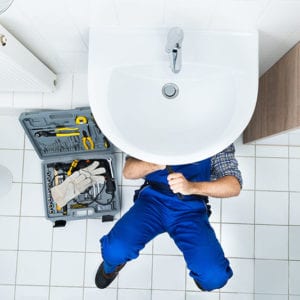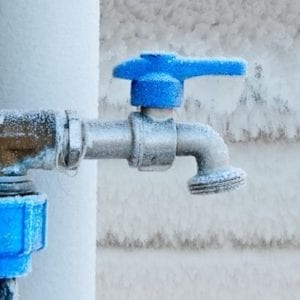How a Simple Plumbing Check Could Put More Money In Your Pocket
When was the last time you called a plumber?
If you’re anything like most people, it was probably when you needed some plumbing work done in your home. The majority of our plumbing calls come from customers who need a specific repair or upgrade (ideally as soon as possible.)
But isn’t that the only reason to call? Why contact a plumber when you don’t really need to?
Well, there are several reasons. For one, we always enjoy catching up with our neighbours! But there’s also a different type of service call we wish we received a lot more often:
Plumbing system checks.
From time to time, people call and ask for us to inspect their plumbing system ‒ even though there’s nothing obviously wrong with it.
What is a Plumbing System Check?
You might know them as plumbing inspections, tune-ups or diagnostics. We usually call them plumbing system checks. Whatever the name, the purpose of this service is the same: to find out the status of your plumbing system and stay ahead of any necessary repairs.
During a plumbing check, a licensed and certified plumber inspects various parts of your plumbing system, including toilets, sinks, showers, tubs, water pipes and drain pipes. They’ll check that fixtures have good water pressure and are draining properly. The plumber will also ask you questions about how your plumbing system has been functioning.
You’ll have a chance to talk about any specific problems or concerns that have come up since the last time your plumber was there.
Essentially, a plumbing system check is like an annual physical for your pipes and fixtures! It’s a chance to check up on potential problems, get a “big picture” of your plumbing system, and make plans for upgrades or repairs if necessary.
How Getting a Plumbing Check Could Save You Money
You might wonder: why go to all the trouble of having your plumbing system checked when you’re not even sure there’s a problem?
The people who invest in preventative checks don’t do it because they like spending money on their plumbing system. In fact, it’s the opposite.
Here are a few of the ways that a routine plumbing inspection could put more money in your pocket!
1. Find and Fix Leaky Pipes
You would be shocked to learn just how common it is to find water leaks in a home’s plumbing.
Some leaks, like dripping faucets, are obvious. But many go undetected for years because they’re hidden behind walls…even as they waste thousands of dollars in water each year!
How’s that possible? According to the City of Toronto:
- 1/16’’ diameter hole (slightly larger than the tip of a ballpoint pen) costs $14.12 per day.
- 1/8″ diameter hole costs $55.37 per day.
- 3/16″ diameter hole costs $127.07 per day.
That’s an astonishing cost to just let slip by for so long!
Having your plumbing checked annually can help you catch on to those types of leaks far sooner.
2. Avoid Costly Water Damage
Sure, leaky pipes can cost a few hundred dollars to repair. But if that leak grows and the pipe eventually bursts…you could expect to be on the hook for thousands more just to clean up the mess.
It doesn’t take much time for a burst pipe to cause four-figure damage to your home. Water damage can also spur the growth of mould, which can be an even bigger headache to deal with in the aftermath.
It definitely pays to have those leaky pipes diagnosed and repaired as soon as possible.
3. Make Your Pipes Last Longer
Plumbing pipes aren’t made to last forever, especially ones made from outdated materials like polybutylene. But even the best-quality pipes installed by the most skilled master plumber will eventually need to be replaced!
Having them inspected will help you keep your pipes healthy and know when it’s time to have your system repiped.
4. Avoid a Plumbing Emergency
Speaking of repiping…the job is a whole lot smoother when it’s a planned project! Having to conduct emergency repairs on the spot comes with added costs and a much bigger mess.
Other plumbing emergencies, like sewer line collapse and sewage back-up, can also carry a very high price.
You can save yourself from thousands of dollars in damage by detecting potential problems like these before they reach a tipping point. That’s exactly what plumbing system checks are for!
5. Plan for Future Repairs and Renovations
A plumbing check gives you a detailed overview of your pipes, faucets, and other fixtures every year.
With this information, you can easily plan ahead for what needs to be replaced and when ‒ instead of fixing and replacing things as they break.
You can wait until the time is right. No more surprise plumbing expenses!
7 Signs It’s Time for a Plumbing Check
It pays to schedule an annual plumbing check, even when there’s nothing clearly wrong with your plumbing system. But if you’re seeing any of the following signs, you’ll want to book your appointment sooner than later to avoid bigger problems.
- Unusually high water bills
Often a sign of a small leak somewhere in the system. - Foul-smelling drain
Indicates a partial clog, mould, or bacteria in your drain pipe. - Unexplained sewage smell (occasionally or often)
Could be a problem with your traps or drain ventilation that’s causing sewer gas to come into your home. - Slow-draining tub, sink or toilet
One of the most common signs of a clogged drain. Multiple slow-draining fixtures could indicate a more serious sewer line problem. - Low water pressure
Leaking faucets, mineral build-up, or a damaged shut-off valve are all possible causes. - Discoloured or off-smelling water
May be caused by rust, sulphur or other metals inside your pipes, or a problem with your water heater. - Noisy/banging pipes
Some of your pipes may not be properly secured.
Ready to book your annual plumbing check? AtlasCare will send a licensed, certified plumber to inspect your home in the Greater Toronto Area today. Call us or contact us online to schedule a same-day or next-day appointment!




